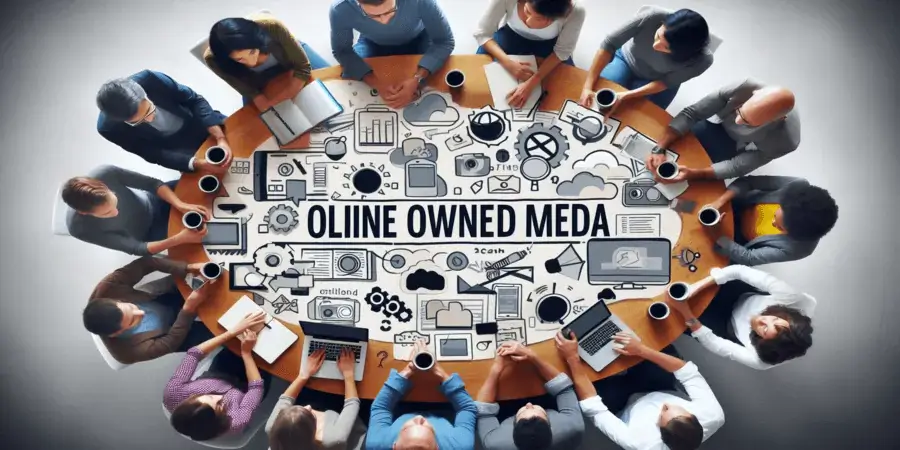In marketing and communications, owned media is a fundamental component that gives businesses control over their messaging and brand narrative. Unlike earned or paid media, owned media allows organizations to directly reach and engage with their target audience through channels they control. This article explores the definition of owned media, its benefits, and provides examples to illustrate its impact.
Definition of Owned Media
Owned media refers to content or platforms that a business or organization has complete control over. These channels are created and maintained by the company, allowing them to disseminate their message without relying on third-party intermediaries. Examples of owned media include:
- Websites: The company’s official website, landing pages, and microsites.
- Blogs: Corporate blogs where the organization publishes articles, news, and updates.
- Social Media Profiles: Official accounts on platforms like Facebook, Twitter, Instagram, LinkedIn, and YouTube.
- Email Newsletters: Regular email communications sent to a subscribed audience.
- Mobile Apps: Company-developed apps that provide information, services, or entertainment to users.
- Podcasts: Company-produced audio content distributed through various platforms.
Owned media is integral to a comprehensive marketing strategy, providing a foundation for consistent messaging and direct engagement with the audience.
Benefits of Owned Media
Owned media offers numerous advantages that can significantly enhance a brand’s marketing and communications efforts:
- Complete Control:
- Businesses have full control over content and messaging, ensuring consistency and alignment with the brand’s strategy. This control includes deciding what to publish, when to publish, and how to present information.
- Cost-Effective:
- Compared to paid media, owned media is generally more cost-effective. While there are costs associated with creating and maintaining owned media channels, these are often lower than ongoing advertising expenses. Owned media also provides long-term benefits without recurring costs.
- Builds Brand Loyalty:
- Owned media channels are ideal for nurturing relationships with customers. Regularly publishing valuable content fosters a sense of community and loyalty, enhancing customer retention and satisfaction through direct communication.
- Supports SEO Efforts:
- Owned media plays a crucial role in search engine optimization (SEO). Updated websites and blogs with high-quality content can improve search engine rankings, driving organic traffic and increasing visibility.
- Drives Traffic and Leads:
- Owned media channels can drive traffic to the company’s website and generate leads. By including calls-to-action (CTAs) in blog posts, social media updates, and email newsletters, businesses can encourage desired actions, such as signing up for newsletters, downloading resources, or making purchases.
- Enhances Content Marketing:
- Owned media is a cornerstone of content marketing. Producing valuable content through owned channels helps educate, inform, and engage the audience, establishing the brand as an industry authority and attracting potential customers.
Examples of Owned Media
To illustrate the impact of owned media, consider these real-world examples:
- Company Websites:
- Apple’s website serves as a central hub for product information, customer support, and e-commerce. It allows Apple to control its brand presentation, provide detailed product descriptions, and facilitate online sales.
- Corporate Blogs:
- HubSpot’s blog is a valuable resource for marketing, sales, and customer service professionals. By regularly publishing high-quality articles, HubSpot attracts and retains a large readership, generating leads and establishing thought leadership.
- Social Media Profiles:
- Nike’s Instagram account showcases its products, athletes, and inspirational stories. Through visually appealing posts, Nike engages with millions of followers, reinforcing its brand image and driving traffic to its website.
- Email Newsletters:
- TheSkimm’s daily newsletter delivers news summaries in an engaging format. By maintaining a large and loyal subscriber base, TheSkimm drives traffic to its website and supports its content marketing efforts.
- Podcasts:
- Salesforce’s “Marketing Cloudcast” podcast provides insights and interviews with marketing professionals. This podcast helps Salesforce engage with its audience, share knowledge, and promote its products and services.
Strategies for Leveraging Owned Media
To effectively leverage owned media, consider the following strategies:
- Develop a Content Plan: Create a content calendar outlining what content will be published, when, and on which channels. This ensures consistent and strategic communication.
- Optimize for SEO: Use relevant keywords and optimize content to improve search engine rankings, increasing visibility and attracting organic traffic.
- Engage with the Audience: Actively engage with your audience through comments, social media interactions, and email responses to build relationships and foster loyalty.
- Analyze and Adjust: Regularly analyze the performance of your owned media channels using analytics tools. Use insights to adjust your strategy and improve results.
Conclusion
Owned media is a critical component of a comprehensive marketing strategy, offering control, cost-effectiveness, and numerous opportunities for engagement and growth. By understanding its definition, benefits, and examples, businesses can harness the power of owned media to build their brand, attract and retain customers, and achieve marketing goals. Through strategic planning and execution, owned media can drive significant results and contribute to long-term success.





